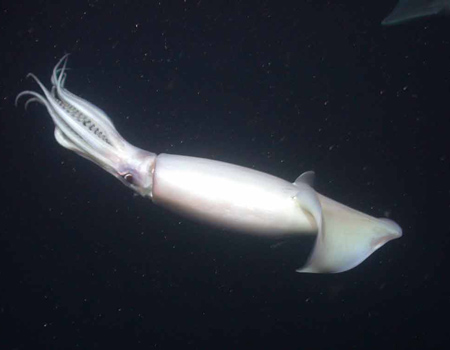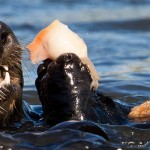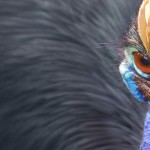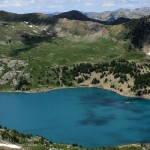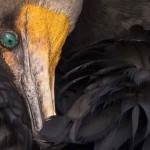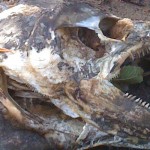
Five years ago, the prevailing knowledge was that you could not track squid with sonar. People said that squid are essentially bags of seawater, so why would you expect to see them? But we were curious. They are huge, and we wanted to see them gorge on their meals of fish and krill. Fortunately Oregon State’s Marine Mammal Institute donated time on a boat that was going to the Sea of Cortez for a different project.
Our plan was to catch squid, tether them 15 to 20 feet beneath the boat, and send out pulses of sound waves to see if any signal bounced back. On the third day of the trip, around dusk, we finally proved that our technique worked. I saw an image of the squid on my computer screen and threw up my arms in excitement.
Then, all of a sudden, I saw another object approaching on the monitor, twice as big as our squid. The two figures merged. I couldn’t separate them. Then one of them left, and I could see something only half the size of what was there before.
I told my team over the radio what I had seen, and they said they had felt tugs on the ropes beneath the boat. They pulled the squid out of the water, and all that was left was the head. Our first successful test yielded an important lesson: Do experiments during the daytime. The squid start feeding at sunset, and clearly they have no problem eating each other.
Since then, we have used sonar to learn a lot more about jumbo squid. Most surprisingly, they work really well together, especially for cannibals. They move in coordinated patterns when they hunt at night—we jokingly call it the squid ballet. We have seen animals in groups of 40 or more that stay exactly the same distance away from each other and swim vertically to create a shape resembling a double helix. We think they are trying to get to fresh spots where the prey does not expect them. Then, once they have scared away everything, they shift over a couple of feet and resume their ballet from a new spot.
You would never get to see that with your own two eyes, so it is an amazing thing to be able to see it using acoustics.


